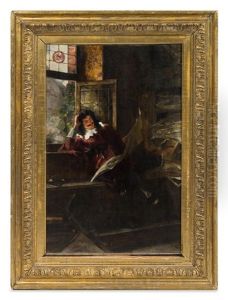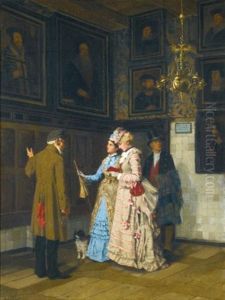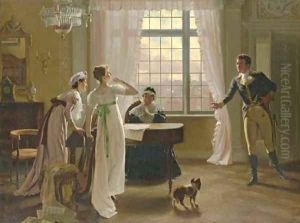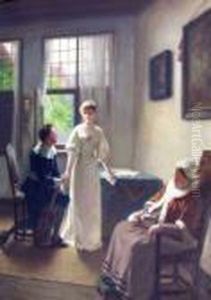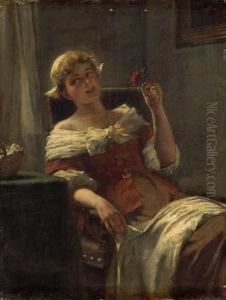Max Volkhart Paintings
Max Volkhart was a German genre painter born in 1848 in Düsseldorf, Germany. He is best known for his detailed depictions of domestic and rural life, often portraying the daily lives of peasants and their surroundings with a sentimental or romanticized vision.
Volkhart began his art education at the Düsseldorf Academy, one of the leading art schools in Germany at the time, known for its emphasis on academic painting and a rigorous approach to art-making. He studied under the tutelage of renowned professors such as Eduard von Gebhardt and Heinrich Lauenstein, who were influential in shaping his early career and artistic style.
Throughout his career, Volkhart focused on genre scenes, a style of painting depicting scenes of everyday life. He was heavily influenced by the Dutch genre painters of the 17th century, and this influence is evident in his use of light, composition, and subject matter. His paintings typically feature warm lighting and rich, vibrant colors, lending them a sense of immediacy and intimacy.
Max Volkhart's work was well-received in his time, and he regularly exhibited his paintings at various art exhibitions in Germany and beyond. His paintings were appreciated for their attention to detail, the emotional content, and their narrative quality. Volkhart's ability to capture the essence of peasant life with both accuracy and empathy contributed to his popularity.
Despite the changing trends in art, Volkhart remained committed to the genre painting tradition throughout his life. He enjoyed a successful career as an artist, although after his death in 1924, his name and work fell into relative obscurity as the art world moved towards modernism and abstract art.
Today, Max Volkhart's paintings can be found in various art collections and museums, and he is recognized for his contribution to the genre painting movement of the 19th century. His works continue to be studied for their historical value and their portrayal of German rural life during that period.

